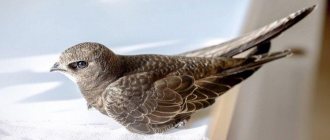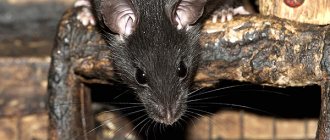The Siberian Crane (northern white crane) is one of the sacred symbols for the peoples living in Yakutia, therefore, since ancient times, this bird has become one of the main motifs in the creation of Yakut silver jewelry. In a general sense, the Siberian Crane is a bird of happiness, a meeting with which (Siberian Cranes avoid people and such meetings are very rare) promises happiness and well-being.
Siberian Crane: external features
The Siberian Crane belongs to the Crane genus, the Crane family. The bird is large - its height ranges from one hundred and forty to one hundred and sixty centimeters, and its weight is about eight kilograms. The wingspan of the crane ranges from two hundred ten to two hundred thirty centimeters, depending on the population.
Only during winter migrations does the white crane make long-distance flights. The Siberian Crane nests and breeds in Russia. These birds are closely monitored by ornithologists.
Features and habitat
The Siberian Crane is a white crane whose height reaches 160 centimeters. The weight of adult individuals ranges from five to seven and a half kilograms. The wingspan usually varies from 220 to 265 centimeters. Males are often slightly larger than females and have a longer beak.
The color of white cranes (as you can easily guess from the name of the bird) is predominantly white, the wings have a black tip. The legs and beak are bright red. Juveniles often have a reddish-brown color, which later becomes noticeably lighter. The bird's cornea is usually pale yellow or red.
The beak of the Siberian Crane is considered to be the longest among all other representatives of the crane family, at the end of which there are sawtooth-shaped serrations. The front part of the head of these birds (around the eyes and beak) contains absolutely no feathers, and in most cases the skin in this area has a pronounced red tint. The eyes of white crane chicks are blue at birth, which gradually begins to turn yellow over time.
are found in Russia , but are actually not found anywhere else on the rest of the surface of our planet. They are distributed mainly in the territory of the Komi Republic, the Yamalo-Nenets Autonomous Okrug and the Arkhangelsk Region, forming two separate populations that are isolated from each other.
Siberian cranes leave Russia exclusively for the wintering period, when flocks of white cranes make long flights to China, India and northern Iran. Representatives of this population settle mainly around various reservoirs and swamps, since their paws are perfectly adapted for moving on viscous soils.
the home of a white crane on your own, since they prefer to be located in the middle of lakes and swamps, surrounded by a wall of impenetrable forest.
Color
The white crane (Siberian crane) has a characteristic feature that makes it difficult to confuse it with another bird - a long red beak with sharp serrations at the ends. There are no feathers around the eyes and beak, and the skin is painted a rich red color and is visible from afar.
On the body the feathers arranged in two rows are white, on the inside of the wings at the ends there are two rows - black. The legs are long and pinkish in color. They are excellent assistants for the Siberian Crane in wetlands: they allow them to move over hummocks in a sticky quagmire.
At first, the eyes of the chicks are blue, then they acquire a yellow tint. The white crane (Siberian crane) lives about seventy years, without forming subspecies.
What does a crane look like?
It can reach a height of 140 to 160 cm with a body weight of 5 to 8.5 kg. The wingspan ranges from 2.1 to 2.3 meters. The white crane has no feathers around its beak and eyes. In adults, the skin in these areas is bright red. The Siberian Crane can be proud of its beak: it is the longest among the entire crane family, is also red and has sawtooth serrations. The white color of the feathers changes to black only at the tips of the wings. The crane's legs are red-pink and long. The plumage of young birds is brownish-reddish. The natural lifespan of the Siberian Crane is approximately 70 years.
Habitat
Today there are two populations of cranes of this species. One lives in the Arkhangelsk region, and the second in the Yamalo-Nenets Okrug. This is a very cautious bird - the Siberian Crane. The white crane, a brief description of which is given in the article, tries in every possible way to avoid meeting people, and this is not in vain: after all, poachers in many areas feel with impunity.
If the bird notices a person, it will leave the nest. The Siberian Crane can abandon not only clutches, but also already hatched chicks. Therefore, it is not recommended to disturb birds during this period. The white crane (Siberian Crane), which nests only in Russia, can winter in Azerbaijan and India, Afghanistan and Mongolia, China and Pakistan. At the beginning of March, the cranes return to their homeland.
In Yakutia, the Siberian Crane travels to remote areas of the tundra and chooses swampy swamps and impenetrable forests for placement. Here he lives until winter migration.
General description of the species
The white crane, or Siberian Crane, (Grus leucogeranus) belongs to the order Crane-shaped, family Crane, genus Crane. These birds nest only in a limited range of the northern territories of Russia.
The Siberian Crane bird reaches a height of about 140-160 centimeters, the wingspan is 210-230 centimeters, and the weight of the crane is from 5 to 8.5 kilograms. The front part of the white crane's head is devoid of feathers. In adult cranes this place is colored red. The beak of the Siberian Crane is very long, it is longer than that of other species, it is red in color and has a saw-toothed serration. The plumage is almost completely white, except for the black flight feathers on the wings. Young Siberian Cranes have brownish-red plumage. The cornea of cranes' eyes is red or pale yellow. The paws are long pink-red. The bird's lifespan is about 70 years.
Habitat
The white crane is rightfully considered a symbol of Russia, since it is in this country that the main habitat of these creatures is located. This method of settlement is called “endemic”. In other words, this is when a certain species or genus of animals lives strictly in a certain geographical area. There are two main populations of Siberian Cranes recorded in Russia. The first flock lives in the Arkhangelsk region. The second is in the north of Yakutia. These birds winter in the wetlands of India or China. By the way, it is in the Celestial Empire that you can find a large number of images of cranes in works of art.
According to modern data, the bird population is under serious threat, as the number of individuals is approaching a critical level. This is especially true for the West Siberian flock. Its habitat runs from the Arkhangelsk region to the Komi Republic, affecting the Yamalo-Nenets Autonomous Okrug. Now, only twenty individuals have been spotted in this territory, which is an extremely tiny number.
The white crane is rightfully considered a symbol of Russia, since it is in this country that the main habitat of these creatures
As for nesting on the territory of Yakutia, from 300 to 3 thousand birds are recorded here. This is also a critical amount. Characteristic for both packs is the choice of places to live. These are various kinds of reservoirs and swampy areas. Despite global urbanization, cranes continue to live beyond the reach of humans.
Siberian Cranes travel enormous distances to winter. The main territories are China, Iran and India. It is noteworthy that such birds have rightfully won the hearts of Asian peoples. Therefore, images of cranes can be found on household items.
Nutrition
Staying in the north, they eat a lot of animal food, on their menu:
- rodents;
- fish;
- amphibians;
- insects;
- small birds, chicks and eggs.
Although cranes are not associated with violent predators, they can be very aggressive and tend to destroy the nests of smaller birds - they love to eat eggs and chicks, and if the parents protect the nests, they can kill and eat them too.
They are capable of very deftly snatching prey out of the water with their beak - they attack it so quickly that it does not have time to do anything
They are capable of very deftly snatching fish out of the water with their beak - they attack it so quickly that it does not have time to do anything. Siberian cranes also pose a threat to other living creatures living in the water, such as frogs and insects. They hunt rodents living near bodies of water, such as lemmings.
Although animal food is preferable for them in the summer, they still mostly eat plant food, since they do not devote much time to hunting. The main source of their nutrition is grass growing in the water - cotton grass, sedge and others. Siberian cranes usually eat only the underwater part of the stem, as well as the roots and tubers of some plants. They also love cranberries and other berries.
In winter, in the south, despite the much greater variety of small animals, they switch almost exclusively to plant food: mainly tubers and roots of grass growing in the water. They do not move away from water bodies; if other cranes sometimes cause damage to crops and plantings in fields nearby, then the Siberian Cranes do not even look at them.
Population
Long-term aerial surveys have shown that the size of the Yakut population in the breeding area between the Yana and Alazeya rivers does not exceed 250–300 birds, including approximately 90 breeding and territorial pairs. In the main part of the breeding range, the population density is 1 pair per 45 thousand hectares. Population numbers have been relatively stable, at least in the last decade
Lifestyle
Like other cranes, Siberian Cranes are monogamous and choose a mate for life.
White cranes are agile and active birds; they devote all their time during the day to searching for food. They spend no more than 2 hours sleeping, and always stand on one leg and hide their beak under the right wing.
Like other cranes, Siberian Cranes are monogamous and choose a mate for life. The period of their mating games is very remarkable. Before mating begins, the couple performs a real concert with singing and dancing. Their songs are amazing and sound like a duet. While dancing, the male spreads his wings and tries to hug the female with them, who keeps her wings tightly pressed to her sides. During the dance, lovers jump high, move their legs, and throw branches and grass up.
They prefer to nest among bodies of water, on hummocks or in reeds. Nests are built by joint efforts, on a hill, 15-20 cm above the water. There are often 2 eggs in a clutch, but under unfavorable conditions there may be only one. The eggs are incubated by the female for 29 days, and the head of the family spends all this time protecting her and the children from predators.
The chicks are born weak and frail, covered with light fluff; of the two, only one survives - the one that is more adapted to life and hardy. It will become covered with red feathers only at the age of three months, and, if it survives, it will reach sexual maturity and white plumage by the age of three.
Security status
The Siberian Crane avoids humans in every possible way and can leave the nest even at the slightest disturbance.
In the Red Book of Russia, two populations of the Siberian Crane are protected: the Ob, or West Siberian, which has been assigned the first protection status, and the Yakut, which has the third protection status. The Siberian Crane is endemic to Russia and is not found anywhere else in the world in the wild. Today, only about 3 thousand birds have survived. The number of individuals in the West Siberian population is simply critical - 20 cranes! Several thousand more Siberian Cranes are kept in zoos and nurseries in Russia, Belgium, the USA and China. Oil production, transformation of the natural environment, drainage of swamps, high demands of the species on certain conditions, strong dependence of the Siberian Cranes on the disturbance factor - this is not the entire list of reasons for the sharp decline in the species’ numbers. The Siberian Crane avoids humans in every possible way and can leave the nest even at the slightest disturbance, so part of the clutches remains deprived. For a long time, scientists had very little information regarding the lifestyle, biology and ecology of this species.
Nutrition
Many naturalists are interested in the question: “What does the white crane (Siberian Crane) eat?” The diet of this beautiful bird includes both plant and animal foods. Along with aquatic plants: tubers, cotton grass, cranberries and sedges, which Siberian Cranes love very much, they will not refuse to feast on large insects, eggs of other birds, rodents, other people's chicks, invertebrate animals and fish. In winter, during migration, Siberian Cranes limit themselves only to plant food. It should be noted that these birds never harm agricultural land.
What does the Siberian Crane eat?
Like other birds from the crane family, the Siberian Crane is omnivorous. Their diet includes various marsh animals and vegetation: small fish, aquatic insects, crustaceans, invertebrates, root parts of marsh plants, berries. Also, white cranes can eat the eggs of other birds, small rodents and fledgling chicks. During winter migrations, they feed mainly on the rhizomes of various marsh flora.
Reproduction
White cranes are monogamous birds. Pairs form when the cranes are six years old. In the middle or end of May, a mature pair of birds chooses a place for future nesting. Like other crane species, the pair celebrates their reunion by singing loudly. The cry of these birds is characteristic - long, high and clear. It distinguishes Siberian Cranes from other species.
The Siberian Crane builds its nests in open water. They are well-compacted platforms made of sedge stems. A prerequisite when choosing a nesting site is the availability of fresh water, and the reservoir must be at least 40 centimeters deep.
It is interesting to watch the mating dance of a couple. At first, both birds throw back their heads and make melodic, complex and drawn-out sounds. Performing his “wedding” song, the male spreads his wings wide, while his chosen one keeps them folded. At this time, the white cranes begin their dance, which consists of bowing, jumping, tossing twigs and flapping their wings.
Both parents are involved in nest construction. Typically the female lays two gray eggs with small dark spots. In a dry year there may be one. The female incubates the offspring for twenty-nine days. At this time, the male vigilantly guards the nest.
The hatched offspring begin a difficult struggle for survival. As a result, only one largest and strongest chick remains. After seventy-five days, it develops brown-red feathers. They turn into snow-white beauties only by the age of three.
Red Book of Russia: white crane (Siberian crane)
The Siberian Crane is the largest bird of its family. It leads a predominantly aquatic lifestyle, which makes it difficult to save this species from extinction. Now the size of the Yakut population does not exceed three thousand individuals. For West Siberian Siberian Cranes, the situation is critical: there are no more than twenty individuals left.
The issue of protecting white cranes was taken seriously in 1970. Numerous nurseries and reserve funds have been created where ornithologists raise these birds from eggs. They also train the chicks to fly long distances. And yet, the threat remains that the white crane (Siberian crane) will completely disappear. The Red Book (international) also filled its lists with this endangered species. Hunting these birds is completely prohibited.
Temperament and character of Siberian Cranes
Despite all their grace and beauty, white cranes are absolutely unsociable. The Siberian Crane does not tolerate the slightest disturbance, which is the main factor in its disappearance. During the nesting period, a pair of these cranes may abandon their clutch if they notice people or helicopters in the breeding area, even at a considerable distance from the nest. This feature of the Siberian Cranes has long been known to the indigenous people of Siberia - the Khanty; they forbade their hunters to visit the swamps during the nesting period of the cranes.
An adult Siberian Crane in the sky. Photo by: Gunnar Pettersson.
White cranes are recognized as the most territorial and aggressive birds among their relatives. The nesting density of Siberian Cranes is impressive - pairs build nests as far as possible from each other. The average distance between nests of Siberian Cranes of the Yakut population is 14-20 km (from 2.5 km to 75 km). Ob Siberian Cranes nest a little closer to each other (from 1.5 to 10 km). All behavior of cranes is highly ritualized - displaying threatening poses allows them to avoid fights during the breeding season and maintains a strict hierarchy in wintering areas.
Hope for revival
Since the mid-nineties of the last century, more than a hundred white cranes raised in nurseries have been released into the natural environment. Unfortunately, such chicks do not take root well (no more than 20%). The reason for such a high mortality rate is the lack of navigational orientation, as well as flight training, which is given by parents in natural conditions.
American scientists tried to correct this problem. They set up an experiment, the essence of which was to guide the chicks along a route using motorized hang gliders. In Russia they developed a similar program, which they called “Flight of Hope”.
Five motorized hang gliders were built in 2006, and with their help the young Siberian Cranes were taken along a long route from Yamal to Uzbekistan, where the gray cranes lived, and the Siberian Cranes went with them to spend the winter. In 2012, President V. Putin participated in such a program. But for some reason, this time the gray cranes did not accept the Siberian Cranes, and ornithologists were forced to bring seven chicks to the Belozersky reserve in Tyumen.
Interesting Facts
- In India, the Siberian Crane is called the lily bird. Indira Gandhi issued a decree (1981), according to which the Keoladeo Park was created in the wintering place of white cranes, where the strictest regime is observed and favorable conditions are created for the protection of these magnificent birds.
- The white crane (Siberian Crane) travels the longest distance compared to other types of cranes: more than five and a half thousand kilometers. Twice a year these cranes fly over nine countries.
- In Dagestan, whose territory the Siberian Cranes cross during migration, a beautiful legend has appeared that the Siberian Cranes are the souls of fallen warriors. The legend formed the basis of a famous song, the words of which were written by Rasul Gamzatov.
- During the mating season, white cranes sleep no more than two hours a day.
- For the Mansi and Khanty peoples, the white crane is a sacred bird, a family totem, and an indispensable character in all ritual ceremonies.
- The Khanty will never bother the Siberian Crane: there is an unspoken taboo on visiting the places where white cranes nest in the spring and summer.
- Ornithologists consider the most effective methods of breeding these birds to be the method of “foster parents” and raising young animals in the reserve. In the first case, the eggs of white cranes can be placed in the nests of gray cranes. In the second, the chicks are raised in a reserve, isolated from human contact. They are then released to adult wild cranes.
Ornithologists continue to develop measures aimed at preserving this magnificent bird. We hope that the white crane (Siberian crane), the description of which we presented in this article, will be preserved and the beautiful bird will delight us with its appearance for a long time.
Lifestyle
Among all the cranes, the Siberian Crane is the most demanding in terms of living conditions, which makes the conservation of this species a difficult task. These cranes are more associated with an aquatic lifestyle than others, as evidenced by their long beak and the structure of their legs, which allows them to move on sticky soil. Additionally, their morphology and behavioral characteristics are somewhat different from other related species.
The voice of the Siberian Crane is noticeably different from other cranes - a clear, high, silver lingering sound.
Avoids people; even if it appears far away, it can leave the nest, which creates a danger of easy prey for the offspring for predators. Therefore, hunters, for example, were forbidden to go into the swamps where the Siberian Crane nests.
During the nesting period in the tundra when the sun never sets, Siberian Cranes are active around the clock. But between 3 and 5 a.m. they reduce activity and sleep. For sleeping, birds choose open areas flooded with water, located at least 100 m from the nearest hillock or bushes. A sleeping Siberian Crane stands on one leg, hiding the other in the plumage of its belly. At this time, the head is placed on top under the wing, the neck is pressed to the body. Sometimes the awakened bird extends its wing or makes a few movements with its free leg. The total duration of complete sleep does not exceed 2 hours.
In wintering areas, Siberian Cranes are strictly diurnal, which begins at sunrise and ends at nightfall.
The Siberian Crane is a nesting migratory species. The length of its migrations is one of the largest among cranes and amounts to 5.5 – 6 thousand km. Birds winter in India, Iran, and Southeast China.
The lifespan of cranes in nature has been little studied; in captivity it can reach 80 years.











